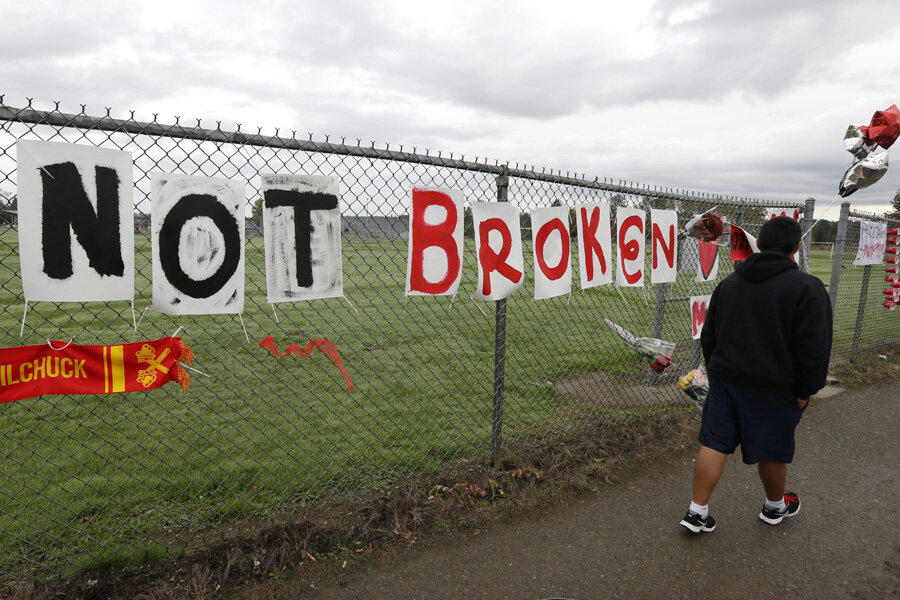Second victim dies from Washington state school shooting
Loading...
| Marysville, Wash.
A 14-year-old girl died two days after a student opened fire inside a Washington state high school, raising the death toll in the shooting to three, including the gunman who killed himself as a teacher tried to stop him.
Authorities scheduled a Monday afternoon news briefing, while the community wondered why a popular homecoming prince would open fire Friday in Marysville-Pilchuck High School cafeteria.
"We can't answer that question," said Matt Remle, a tribal guidance counselor who has an office at Marysville-Pilchuck High School, which is 30 miles north of Seattle. "But we try to make sense of the senselessness."
The shooter, Jaylen R. Fryberg, was from a prominent Tulalip Indian family.
Gia Soriano died Sunday night, and her organs will be donated for transplant, officials at Providence Regional Medical Center Everett said.
"We are devastated by this senseless tragedy," her family said in a statement, read at a news conference by Dr. Joanne Roberts. "Gia is our beautiful daughter, and words cannot express how much we will miss her."
The Snohomish County medical examiner's office on Monday officially released the names and causes of death of one of the victims and the gunman, a popular freshman who opened fire Friday.
Zoe R. Galasso, 14, died of a gunshot wound after being shot by Fryberg, 15, who also died of a gunshot wound. The medical examiner ruled his death a suicide. Fryberg killed himself as a teacher intervened in the shooting in the cafeteria, authorities said.
Three other students remain hospitalized, two in critical condition and one in satisfactory condition.
On Sunday, parents and students gathered in a gymnasium at the school for a community meeting, with speakers urging support and prayers and tribal members playing drums and singing songs. Fryberg was from a prominent family from the Tulalip Indian tribes.
"We just have to reach for that human spirit right now," said Deborah Parker, a tribal member.
Young people hugged each other and cried as speakers urged people to come together.
"Our legs are still wobbly," said Tony Hatch, a cousin of one of the injured students.
Of the wounded students, only Nate Hatch, 14, showed improvement, having been upgraded to satisfactory condition Monday. He remained in intensive care at Harborview Medical Center in Seattle and was awake and breathing on his own, hospital spokeswoman Susan Gregg said. Andrew Fryberg, 15, was in critical condition in intensive care at the hospital. Both are cousins of Jaylen Fryberg.
Shaylee Chuckulnaskit, 14, remained in critical condition in intensive care at Providence Regional Medical Center.
As the community looked for comfort, a makeshift memorial on a chain-link fence kept growing Sunday. Balloons, flowers, stuffed toys and signs adorned the fence near the school, which will be closed this week.
Meanwhile, the close-knit community on the nearby Tulalip Indian reservation struggled with the news that the shooter was a popular teenager from one of their more well-known families.
Remle said he knew Fryberg and the other students well.
"My office has been a comfort space for Native students," he said. "Many will come by and have lunch there, including the kids involved in the shooting."
They all were "really happy, smiling kids," Remle said. "They were a polite group. A lot of the kids from the freshman class were close-knit.
"These were not kids who were isolated," he said. "They had some amazing families and have amazing families."
These factors make the shooting that much more difficult to deal with, Remle said.
"Maybe it would be easier if we knew the answer," he said. "But we may never know."
[Editor's note: The original headline incorrectly stated the number of the shooting victims who have died.]







